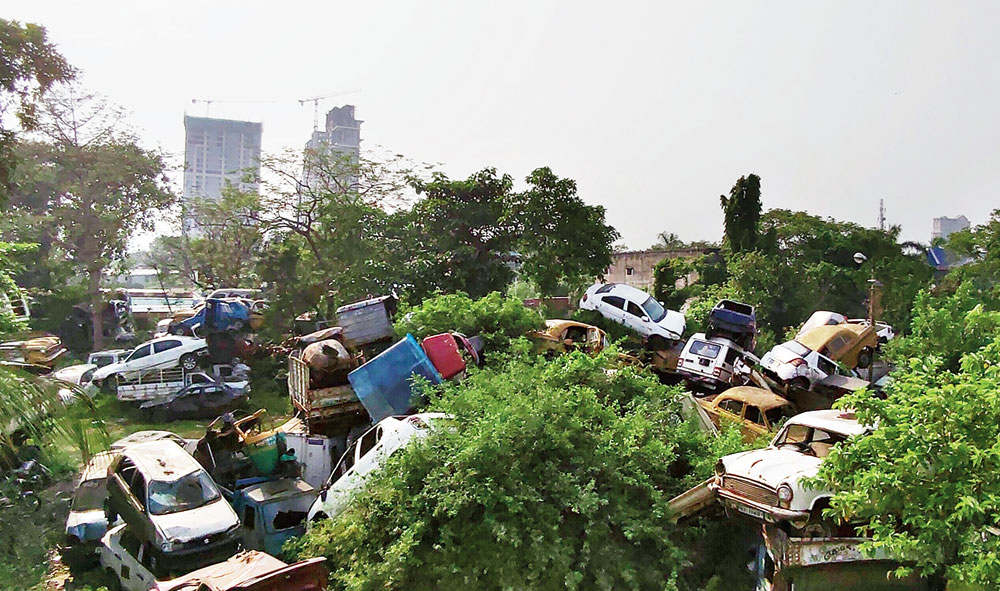The PWD has issued a circular asking officials overseeing construction sites across Calcutta to ensure “all open pits where water might accumulate and remain stagnant” are “closed immediately”, ahead of the dengue season.
Two policemen on duty at the dumping ground told Metro that they did not know of the CMC instruction to the police to clear the area and ensure vehicles don’t have accumulated water.
The two, however, admitted mosquitoes and snakes made it difficult for them to stay on the plot.
The police have instructed all traffic guards and the officers in charge of the dumping ground to prevent accumulation of water inside vehicles, an officer at Lalbazar said.
“We have told our employees at the dumping ground to take adequate measures. Vehicles at the dumping ground get auctioned. But it’s a long-drawn process,” an officer said.
“The CMC has asked us to clear the plot.... We have already started looking for an alternative place to keep seized vehicles.”
Asked if the civic body would offer an alternative land to Lalbazar, deputy mayor Ghosh said the government would have to take a call. “We are struggling for an alternative land for the Dhapa dumping ground. How can we offer any land?”
A plot beside Pragati Maidan fire station with 1,200 seized vehicles dumped by police is a breeding ground for the Aedes aegypti mosquito that causes dengue, the civic body has said.
The 3-acre plot along Basanti Highway, about 500m off Science City, is used by Calcutta police to keep seized vehicles, a Calcutta Municipal Corporation official said.
The civic body has asked Lalbazar to clear the dumping ground after a vector control team found that rows of stacked vehicles had turned into breeding grounds for the mosquitoes that cause dengue, the official said.
Water remains trapped under the bonnet of the vehicles, on the wheel rims and even under the seats, the official said.
These pools of water go unnoticed and turn into breeding grounds for mosquitoes. Water samples collected from various vehicles, some of which have been lying for years, have been found to contain Aedes aegypti larvae, he said.
The mosquito breeds in clear, stagnant water. At least 3,000 people had tested positive for dengue in the Calcutta municipal area last year.
“We have asked the police to clean up the dumping ground after our vector control team found mosquito larvae in the water accumulated inside the vehicles,” Atin Ghosh, deputy mayor and in charge of vector control, said.
“We have told them to ensure that water does not accumulate in the vehicles that are kept on various police station premises.
“Every police station should have a person with whom members of vector control teams from each ward will coordinate.... There has to be some accountability.”
The government has been trying to step up its drive against dengue before the monsoon and asked various agencies, including the CMC, PWD, and the urban development, municipal affairs and health departments to ensure that water does not accumulate anywhere.
Civic health workers have started visiting homes of those who had been infected with the dengue virus last year and scanning their neighbourhoods.

Calcutta Municipal Corporation has said rows of stacked vehicles have turned into breeding grounds for the Aedes aegypti mosquito that causes dengue Picture by Pradip Sanyal










